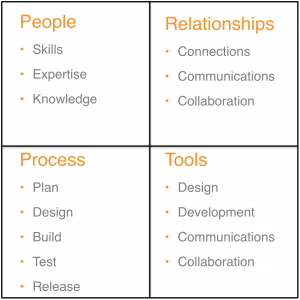Sprint Retrospectives: making them impactful and meaningful
I’m stating the obvious when I say the first step to making Sprint Retrospectives impactful and meaningful is holding them in the first place. Many projects go straight from Sprint Review to Sprint Planning for the next Sprint (undertaking release activities in between, aside). Sprint Retrospectives seem to be ‘one of those things’ often forgotten (or worse, consciously left out). It’s the ScrumMaster’s responsibility to ensure this doesn’t occur.
And of course, I’m also stating the obvious when I say holding Sprint Retrospectives diminishes in value the less participation there is (or the less active participation there is). The purpose of the Sprint Retrospective is for the team to inspect itself to identify areas needing improvement (and areas that don’t necessarily need improvement but that we shouldn’t inadvertently change for the worse). The degree and value of self-inspection reduces with diminished participation from the team (whether that is not showing up or showing up but not contributing). And the team is all those involved in the Sprint including the customer, the development team, potentially end-users and any other key stakeholders. Naturally, the logistics become more involved the greater the team. Some pragmatic solutions to getting everyone in the same place at the same time, is to break the effort up and hold multiple sessions over multiple days and piece the results together (less than ideal) to leveraging online conferencing tools.
With everyone’s attendance, undivided attention and active participation it’s critical to maximize the opportunity and extract as meaningful information as possible in the no-more-than-three-hours available (we find we can complete our Sprint Retrospectives in one to two hours, on average). To achieve this, it pays to have an established approach for facilitating the session as opposed to leaving it as a free-form, open discussion. We use a simple grid to help facilitate our Sprint Retrospectives, spending anywhere from 15-30 minutes on each topic area (People, Relationships, Process and Tools) and identifying what worked well (let’s not inadvertently stop doing that), what could be better and what steps (actions) do we need to take to make things better.

Which leads us to acting upon any areas identified for improvement. Failing to do so leads to bewilderment and discouragement as people get that deja-vu, haven’t we been here before look their face during the next Sprint Retrospective. Effecting positive change comes down to grass roots leadership and management. Taking the initiative (often the ScrumMaster in our organization) to designate someone with coming up with an action plan and ensuring those actions are undertaken starting with the Sprint Planning activity for the next Sprint.
